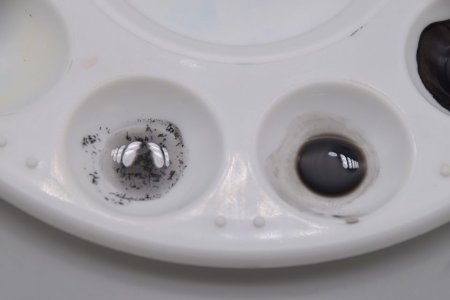I would like to revive this thread because I have a 480 ml 4012 bottle. I saw a video of a person on YouTube who claimed that using this bottle as a reducer is not a good option. As previously someone suggested as a joke in this thread, it can be used as a cleaner. This guy said the alcohol content in the reducer can harm your artwork. I am not sure what to believe and I am feeling a bit confused.
If it hasn't gone bad it will be fine with lots of paint. Even if its evaporated a bit it will still probably be fine.
The main active ingredient in 4012 reducer is Butoxy Ethanol (no big secret it is literally written on the bottle)
If you buy trident reducer. Ironically you get a bottle of concentrate which is :::drumroll::: Butoxy ethanol.
Butoxy ethanol is outright banned in a few countries now... so if your wondering why you cant buy trident in your country
there ya go. Im not even sure how they got around shipping it to the USA, some states have banned its use.
It ALSO used to be an active ingredient in windex... which is how the horrible practice of windex as a reducer came about..
Windex does not contain that product anymore. Most cleaners have now removed it after decades.
4012 can cause seeding with some of the new createx paints. But that had very little bearing on why they stopped selling it.
It has to do with the logistics nightmare of where it can be shipped and where it cannot... along with the new labeling required
by environmental regulations.
Any supplier who still has 4012 on the shelf can still sell the stock. so you will see it crop up here and there But if you do see it at a supplier you know its been there a while. Createx has not shipped it out in a good bit.
As for why it started seeding. to cut through all the theories. Resin technology changes. Some of the resins manufacturers were using for paint became no longer available. IE some paint lines were affected. So a bottle of CI you bought in 2018 is not the same formula of CI you would buy today. The wicked from early versions to now are changed.. Improved vastly in that time. Another reason for seeding can be leaving a bottle open.. the water evaporates leaving behind a more potent concoction.
If you think your 4012 is too stong thin it with distilled water.. (deionized would be even better if you have that option because its cleaner and slightly less acidic) And dont mix your original bottle. make a seperate container. OR mix some 4011 with the 4012 is an even better option it wont blow up I promise.
SOOOO Key takeaways here.
1 whomever said 4012 will ruin your art is clueless.
2 paints change over time.
3 environmental regulations affect what we do.
4 and this is one of the few "homebrews" that make sense.
If you have trident concentrate..
Mix up a batch and add in a touch of retarder (propolyne glycol and glycerin if you have it or ANY retarder from either golden or createx or solid reputable companies) And you will have a pretty close behaving reducer to the original 4012.
5 Trident sprays like excrement with water... but works with 4012 wonderfully (and with their own reducer)
And of course use your own judgement and follow all proper safety requirements whenever playing with paint or reducers.


